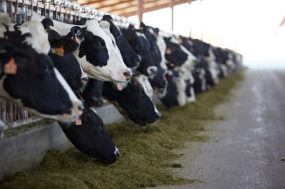The EFP is now available to farmers of all commodities in nine provinces; Quebec has a similar program to assess on-farm environmental performance, called the agri-environmental support plan or Plan d’Accompagnement Agroenvironnemental (PAA).
Thanks to the ongoing interest of farmers, to the commitment of agronomists and field staff across the country, and to funding support through federal-provincial agreements, EFPs continue to be a success story.
The EFP is a confidential self-risk assessment tool farmers use to identify ways to make improvements on the farm that will be beneficial to the environment and the efficiency of their on-farm management.
Farmers evaluate their equipment and practices in areas such as wells, manure storage, pesticide and fertilizer handling, soil health, energy efficiency and woodland management.
The EFP is delivered differently in the provinces, with some provinces favouring a one-on-one farmer to field staff approach and others using workshops; in Nova Scotia, field technicians go on-farm and work through individual topics with farmers.
In general, a farm has to produce an action plan for each area where high risk is identified before their EFP can be deemed complete. The action plan might include elements ranging from monitoring to implementation of specific actions.
By completing a risk assessment and creating an action plan, farm families can better understand the impact of their farm on their local environment and outline management strategies that will result in effective improvements on their farm.
What is the benefit of having a current EFP?
Completing an EFP is about more than just filling in paperwork or a farm doing their part to save the planet. It helps farmers use the latest research to improve efficiency and stay informed on recent regulatory changes that could affect their farm.
The action plan also helps with decision-making on the farm by prioritizing projects as short-term or long-term goals based on environmental risk and financial constraints.
Revising one’s action plan every five years helps drive continuous improvement by identifying risk areas and outlining strategies to monitor and manage risks; this is so farmers can take action to correct existing problems or avoid potential ones.
The action plan is also designed to be a living document that can be updated to track a farm’s progress. An ounce of prevention is worth a pound of cure.
How is an EFP related to proAction?
Having an up-to-date EFP will likely be a requirement of the proAction Initiative, along with a completed action plan that addresses areas designated as industry priorities.
Why is the environmental module of proAction relying on the EFP?
The proAction Initiative is a national program, but environmental concerns change from region to region and even from farm to farm. An EFP is an effective tool available in every province and which is designed to identify priority areas on individual farms. An EFP therefore provides a strong beneficial impact for the environment and avoids a one-size-fits-all solution.
Is the EFP the only requirement of the environment module of proAction?
Having an EFP is proposed as one requirement of the environment module of proAction. The working group on environment is focusing on four priority areas: manure storage, manure and nutrient management, water management, and use and storage of chemical inputs, as these are considered to have a high risk for the environment.
When the proposal is complete and voted upon in 2015, specific requirements related to these four areas will likely form part of the proAction validation.
The specific requirements are, however, still under development. In addition, requirements under the environment module will not become mandatory and part of the validation until 2021-2023. PD
Dairy Farmers of Canada is the national policy, lobbying and promotional organization representing Canadian dairy farmers. It works to maintain policies that foster the viability of Canadian dairy farmers and promote Canadian dairy products and their health benefits through advertising, contests, partnerships, media relations and nutrition programs. Follow it through Twitter and Facebook.








